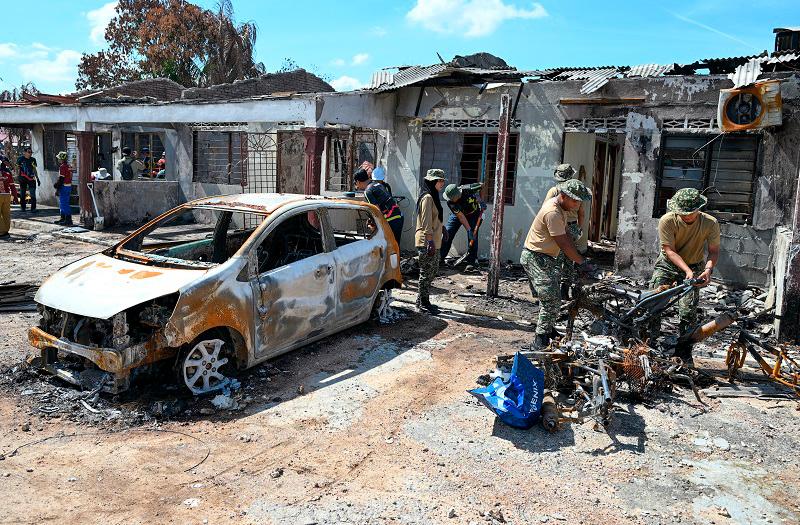THE recent gas pipeline explosion at Putra Heights on April 1 has raised pressing legal questions about Malaysia’s preparedness, accountability structures and regulatory safeguards when industrial disasters occur.
With over 227 houses and 365 vehicles affected, and 87 homes reportedly written off as total losses, victims now face a long, complex journey towards compensation
and recovery.
Gaps in protection
It is commonly assumed that homeowners can recover compensation through fire insurance policies. However, this is only possible if adequate home fire insurance has been purchased beforehand.
While fire insurance is generally a prerequisite for mortgaged homes, owners of older and fully paid-off properties may have little or no coverage, leaving them solely responsible for any losses.
Even where fire insurance exists, it typically covers only structural damage and fixed fittings. High-value movable items such as laptops, mobile devices and entertainment systems, are often uninsured and may be excluded from coverage. Items of sentimental value are irreplaceable. Moreover, long-term depreciation of property due to adverse publicity is generally not compensable.
For vehicles, owners who opted only for basic third-party insurance – common for older vehicles, motorcycles and commercial vehicles – are unlikely to be covered for fire-related damages. This potentially leaves many without financial recourse.
The explosion and subsequent suspension of gas transmission in the area also disrupted operations at about 200 nearby factories, including food manufacturers and metal processing facilities. In legal terms, these are examples of “pure economic loss” – financial losses not arising from injury or physical damage but from the indirect consequences of the incident.
Under current Malaysian law, such losses are generally non-recoverable.
In the 2018 Federal Court decision of Tenaga Nasional Berhad v Batu Kemas Industri & Anor, it was clarified that even where negligence is established, damages for pure economic loss may not be recoverable.
This significantly restricts legal remedies for the affected industries and raises questions about whether existing laws adequately reflect the economic interdependencies of modern industrial zones.
Public scrutiny has turned to the roles played by the pipeline owner, the Energy Commission, and the local authority.
Several key statutes govern the responsibilities of these parties, including the Gas Supply Act 1993 (Act 501) (as amended in 2016), the Gas Supply Regulations 1997 [P.U.(A) 287], the Energy Commission Act 2001 (Act 610) and the Street, Drainage and Building Act 1974 (Act 133).
As the licensed gas transporter in the affected area, the pipeline owner is responsible for the
safety and maintenance of gas installations under Parts III and VI of the 1997 Regulations.
To date, there is no indication if the pipeline owner failed in these responsibilities.
The Energy Commission’s duties are outlined in Section 4(1) of Act 501, including the mandate “to protect the public from dangers arising from the distribution of gas through pipelines” [Section 4 (1)(f)].
Meanwhile, the local authority’s responsibilities under Act 133 include the reported issuance of a permit for excavation works in the area prior to the incident.
However, statutory immunities complicate any imposition of liability. The Energy Commission is protected from certain legal actions under Section 37 of Act 501 while the local authority is protected under Section 95(2) of Act 133 as explained by the 2006 Federal Court case of Majlis Perbandaran Ampang Jaya v Steven Phoa Cheng Loon. These protections may limit the availability of legal recourse against the public authorities involved.
While contractor negligence remains a possibility, it must be emphasised that legal liability cannot be determined until investigations are complete.
Even if such negligence is established, questions remain about whether the contractor would have the financial resources or insurance coverage to compensate victims on this scale. This underscores the importance of mandatory liability insurance and stringent regulatory controls for high-risk works near critical infrastructure.
Resilient legal framework
The federal government, alongside the Selangor state government and the pipeline owner, have extended commendable ex gratia financial assistance to the victims.
Nonetheless, it is also important that stronger legal protections are developed to address the aftermath of similar industrial tragedies in
the future.
The Putra Heights explosion is a sobering reminder that as Malaysia advances its infrastructure and industrial capacity, our legal and regulatory systems must keep pace. Strengthening protections, closing insurance gaps and ensuring accountability are no longer optional – they are essential to safeguarding lives and livelihoods.
Dr Wilson Tay Tze Vern is a senior lecturer and programme director of the Doctor of Philosophy in Law programme at the School of Law and Governance,
Faculty of Business and Law, Taylor’s University. Comments: letters@thesundaily.com









